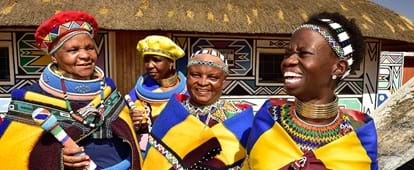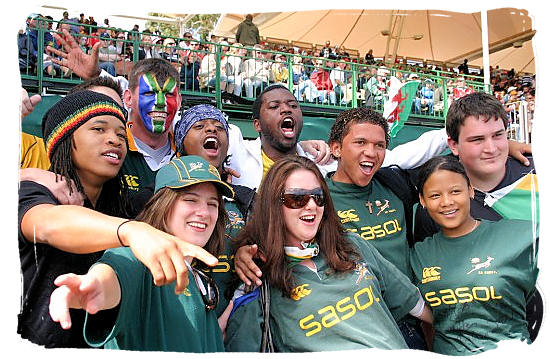The Single Strategy To Use For South African Culture Today
The Single Strategy To Use For South African Culture Today
Blog Article
Get This Report about South African Culture Today
Table of ContentsThe smart Trick of South African Culture Today That Nobody is DiscussingOur South African Culture Today PDFsThe Main Principles Of South African Culture Today The Ultimate Guide To South African Culture TodaySouth African Culture Today for BeginnersSouth African Culture Today - An Overview
A matter of significance in Zambian villages is the passing away of liked ones. All participants of the village put money, time and effort with each other for the funeral of the deceased.Throughout the mourning period; men stay outside your home and the females remain inside your home of the deceased. After discussing the departed, the village walks to the location of burial to claim their last goodbyes. Music and dance is a very crucial aspect of the Zambian society. The numerous tribal units have their own dancing types; nevertheless, makishi prevails among all people.
The Of South African Culture Today
When it concerns songs, drums are used one of the most, with a variety of drumming events. In Zambia, bulk of individuals are Christian; Protestant and Roman Catholic. There are tiny groups of Muslims and Hindus, with the rest following regional native tribal beliefs.

South African heritage and culture is profoundly varied, and includes several groups of people who each have their very own customs and ideas. Having such a variety of people and cultures is what makes South Africa so special. In real feeling of the expression, we are a rainbow country.
Making it the 7th on the list of nations with the most Portuguese individuals in it outside of Portugal. Portuguese is not only a culture, yet it is also a language and a nationality. Portuguese individuals originate from the country of Portugal in Europe, nonetheless, due to Portugal (like lots of other countries in Europe) discovering the world and conquering various other countries during the 15th 20th centuries, South Africa has what we call Portuguese South African's living in it.
The Basic Principles Of South African Culture Today
Among the popular attributes of the topography is a plateau that covers nearly two thirds of the facility of the country. The plateau complex climbs toward the southeast, where it climaxes in the Drakensberg array, part of a cliff that separates the plateau from the coastal locations. The Drakensburg includes Champagne Castle, the highest possible top in the nation.
The area north of the Witwatersrand, called the bushveld, slopes downward from eastern to west towards the Limpopo River, which forms the worldwide boundary. The western section of the plateau, the middleveld, likewise comes down in the direction of the west and varies in elevation in between the highveld and bushveld. In between the Drakensburg and the eastern and southern shoreline, the land comes down to the sea.
Nearer the shore there is a low-lying plain called the eastern lowveld. Southwest of the plateau the country ends up being considerably much more arid, paving the way to the stony desert of the Great Karroo, verged on the eastern by the reduced, much better watered plateau of the Little Karroo. Separating the dry southerly inside from the sandy coastal of the southerly coast and West Cape is another variety, the Langeberg.
The smart Trick of South African Culture Today That Nobody is Discussing
The country's racially, ethnically, and politically split history has produced national and subnational icons that still operate as icons of the nation, and others signs that are accepted only by certain teams. The monoliths to white inhabitant conquest and political dominance, such as the Afrikaner Voortrekker ("pioneer") Monolith in Pretoria and the Rhodes Monolith honoring the British colonial empire builder and Cape head of state Cecil Rhodes, continue to be sectarian icons.
The very first contemporary citizens were the San ("bushman") hunter-gatherers and the Khoi ("Hottentot") individuals, who herded animals (South African culture today). The San might have been present for thousands of years and left proof of their existence in countless ancient cavern paintings ("rock art"). Bantu-speaking clans that were the forefathers of the Nguni (today's amaZulu, amaXhosa, amaSwazi, and vaTsonga individuals) and Tswana-Sotho language groups (today's Batswana and Southern and Northern Basotho) moved below east Africa as very early as the fifteenth century

Both previous republics of the Orange Free State and Transvaal visit their website (South African Republic) were established by Afrikaner inhabitants that defeated and dispossessed the Basotho and Batswana. Lesotho would have been by force incorporated into the Orange Free State without the extension of British security in 1869. The best unification of the country arised from the South African Battle (18991902) between the British and both Afrikaner republics, which lowered the country to spoil at the start of the twentieth century.
Afrikaners historically considered themselves the only real South Africans and, while providing full citizenship to all locals of European descent, rejected that standing to individuals of shade till the autonomous shift of 1994. British South Africans retain a feeling of cultural and social link to Great Britain without deteriorating their identification as South Africans.
The Basic Principles Of South African Culture Today
The diversity and fragmentation within ethnic groups and the equilibrium of stress in between those groups during the twentieth century avoided interethnic civil conflict. While intergroup stress over sources, privileges, and political supremacy stay, those conflicts are as likely to match Zulu versus Zulu as Zulu against Xhosa or African against Afrikaner.
From colonial India, British sellers and managers brought the rounded metal ornamental roof coverings and slender shoelace job pillars use this link that still represent the terraces of cottages in the areas and cities throughout the country. Homes of praise Going Here contribute a vital building element even in the tiniest towns. Along with the rising steeples and traditional stonework of Afrikaans Dutch Reformed churches, Anglican churches, synagogues, mosques, and Hindu shrines give range to the religious building scene.

Slaughtering and the developing of standard grain beer are vital in protecting the participation and a good reputation of the ancestors that are considered the guardians of good luck, prosperity, and health. Indian communities preserve their native cooking customs and use them on Islamic and Hindu ritual and ceremonial celebrations. Afrikaners and Coloured individuals gather at weekends and special events at multifamily barbeques called braais, where area bonds are strengthened.
Because this was the primary economic business of both black Africans and white homesteaders, problem in between those teams focused on the possession of grazing land and livestock. In 1867, the largest diamond deposits in the globe were found at Kimberley in the west main location. The wide range from those areas aided fund the exploitation of the best gold coral reef in the globe, which was uncovered on the Witwatersrand in 1886.
The Only Guide to South African Culture Today
This led to misunderstandings and deliberate misstatement in the negotiations of white settlers and federal government officials with African chiefs throughout the colonial period (South African culture today). In the establishment of African reserves, some facets of common and primarily "tribal count on" land period were preserved, and even in white country areas, forms of public period were still practiced in locations with African neighborhoods
After the democratic makeover of 1994, programs for land restitution, redistribution, and reform were instituted, but progression has been slow-moving. The white minority still manages eighty percent of the land. In the wake of farming land invasions in Zimbabwe, the Division of Land Affairs has actually pledged to speed up land redistribution.
Report this page